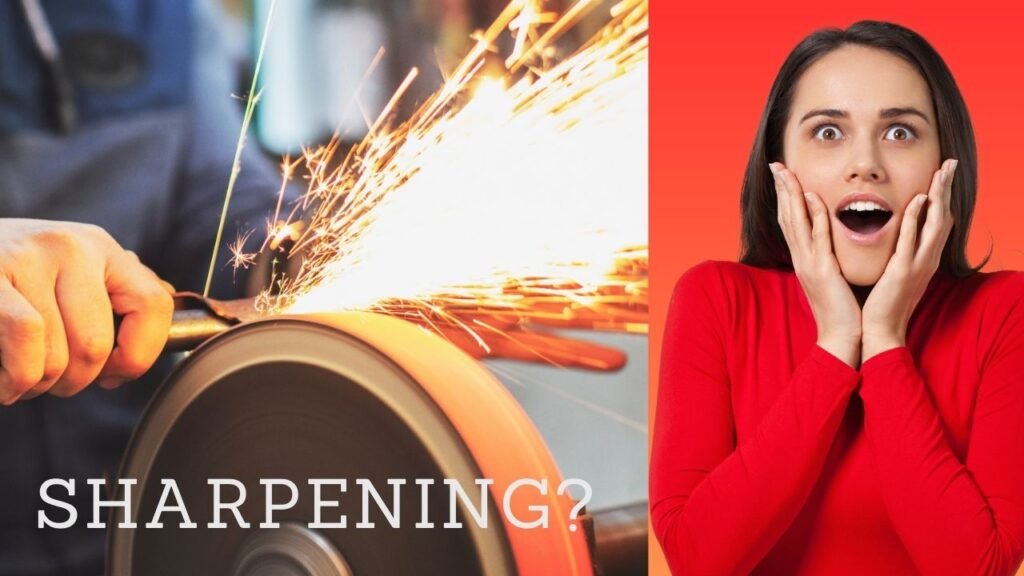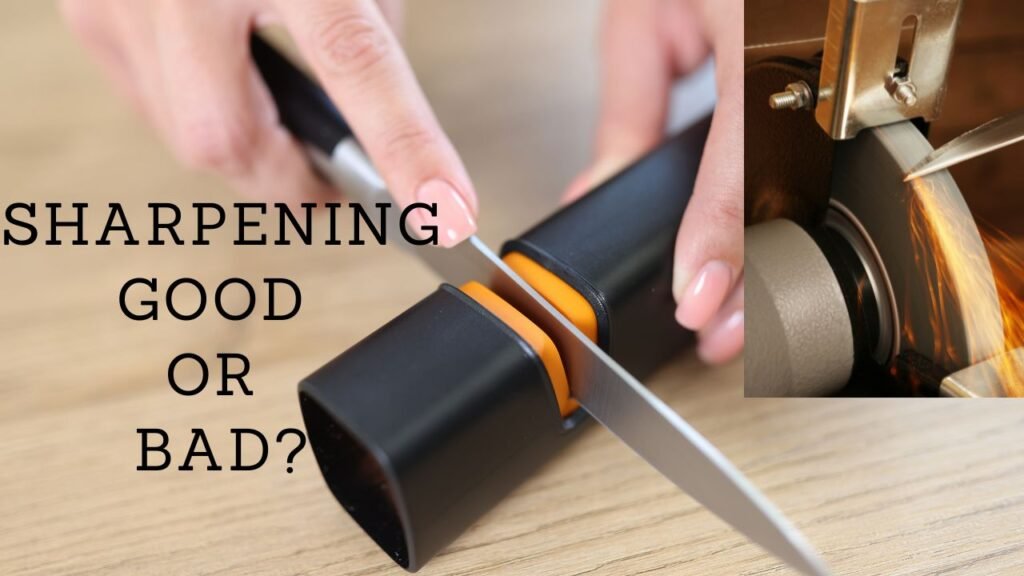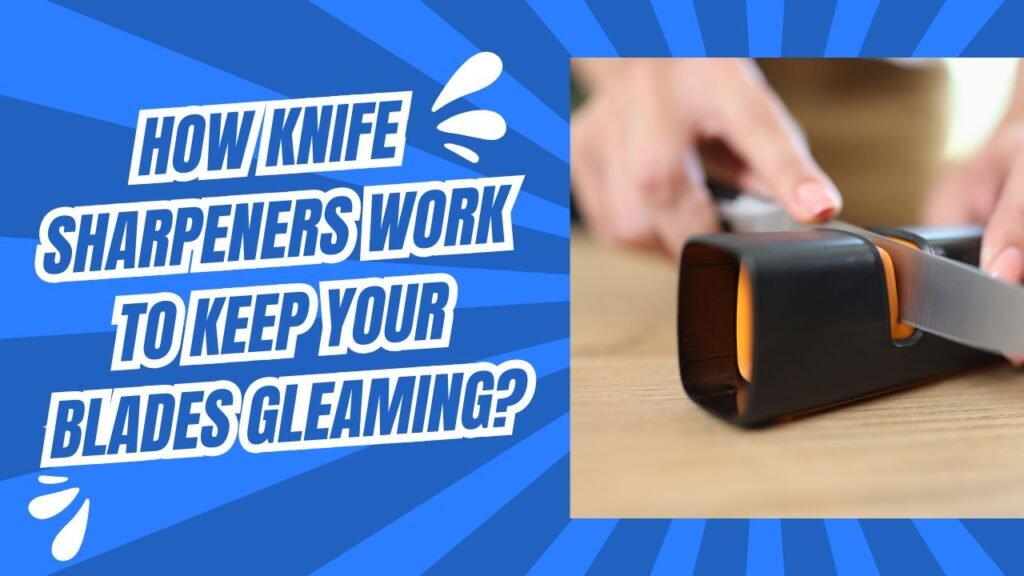Have you ever sliced through a tomato with a knife that felt more like a dull spoon? Frustrating, right? Understanding how knife sharpeners work can transform your kitchen experience, ensuring every cut is smooth and effortless. Whether you’re a culinary novice or a seasoned chef, mastering knife maintenance is essential. Let’s dive into the fascinating mechanics behind these handy tools and discover how they can keep your blades in top-notch condition.
The Anatomy of a Knife Sharpener
Before we unravel how knife sharpeners work, it’s essential to understand the components involved. A typical knife sharpener consists of:
- A Base: Provides stability during sharpening.
- A Sharpening Surface: The area where the blade is honed, which can vary in material and coarseness.
- Guides or Angles: Help maintain the correct sharpening angle for consistent results.
- Handles: Offer grip and control while sharpening.
Types of Knife Sharpeners
There are several types of knife sharpeners available, each working differently to restore your blade’s edge:
- Manual Sharpeners: Hand-held devices that require user effort.
- Electric Sharpeners: Automated machines that do the work with minimal input.
- Sharpening Stones (Whetstones): Traditional tools that use abrasive surfaces.
- Honing Rods: Used for maintaining the edge rather than sharpening.
| Type of Sharpener | Pros | Cons |
|---|---|---|
| Manual Sharpeners | Easy to use, affordable | Requires skill, inconsistent results |
| Electric Sharpeners | Fast, consistent sharpening | More expensive, less control |
| Sharpening Stones | Versatile, precise control | Learning curve, time-consuming |
| Honing Rods | Quick edge maintenance | Doesn’t remove significant dullness |
The Sharpening Process: Step by Step
Ever wondered how knife sharpeners work their magic? Let’s break down the process:
1. Assessing the Blade
Before sharpening, it’s crucial to evaluate the knife’s condition. Look for:
- Dullness: The blade lacks a sharp edge.
- Chips or Nicks: Damages along the edge.
- Misalignment: The edge isn’t straight.
2. Choosing the Right Sharpener
Select a sharpener based on your knife’s condition and your sharpening proficiency. For instance, electric sharpeners are great for quick fixes, while sharpening stones offer precision for detailed work.
3. Maintaining the Correct Angle
Maintaining the right angle is vital for effective sharpening. Most knives require a 15-20 degree angle. Guides on sharpeners help keep this angle consistent, ensuring an even edge.
4. Abrading the Blade
The sharpening surface, whether it’s abrasive belts, stones, or ceramic rods, removes metal from the blade. This process realigns and hones the edge.
5. Polishing the Edge
After abrasion, the blade is polished to refine the edge, making it smoother and sharper. This step enhances the knife’s performance and longevity.
6. Testing the Sharpness
Finally, test the blade’s sharpness by slicing through paper or gently running your thumb perpendicular to the edge. A sharp knife should cut effortlessly without tearing.

The Science Behind Sharpening
Understanding how knife sharpeners work goes beyond the mechanical process. It involves some fascinating material science:
Metal Hardness and Toughness
Knives are made from various steels with different hardness and toughness levels. Harder steels hold an edge longer but are more brittle, while tougher steels are less likely to chip but may require more frequent sharpening.
Edge Geometry
The edge angle and bevel determine the knife’s cutting performance. A smaller angle results in a sharper edge but may wear down faster, whereas a larger angle provides durability but less precision.
Abrasive Materials
Sharpeners use different abrasives to remove metal:
- Diamond: Extremely hard, great for precision.
- Ceramic: Fine abrasives for polishing.
- Grits: Coarse for heavy sharpening, fine for honing.
Choosing the Right Sharpener for Your Needs
With so many options available, selecting the right sharpener can be daunting. Here’s a quick guide:
Manual vs. Electric Sharpeners
| Feature | Manual Sharpeners | Electric Sharpeners |
|---|---|---|
| Ease of Use | Requires more effort | Automated, less effort |
| Control | Higher control over angle | Limited control, preset angles |
| Speed | Slower, more hands-on | Faster, efficient sharpening |
| Cost | Generally cheaper | More expensive |
Manual sharpeners are ideal for those who enjoy the hands-on process and seek precision, while electric sharpeners are perfect for quick, consistent results with minimal effort.
Sharpening Stones vs. Pull-Through Sharpeners
Sharpening stones (whetstones) offer versatility and control, suitable for various blade types and sharpening needs. However, they require practice to use effectively. Pull-through sharpeners are user-friendly and great for beginners, but they offer less customization.
Tips for Effective Sharpening
To get the most out of your sharpener, keep these tips in mind:
- Consistency is Key: Maintain a steady angle throughout the process.
- Don’t Overheat the Blade: Excessive friction can damage the metal.
- Clean Your Sharpener Regularly: Remove metal shavings and debris to ensure optimal performance.
- Know When to Sharpen: Regular maintenance prevents excessive wear and tear.

Common Myths About Knife Sharpening
Let’s debunk some myths about sharpening knives:
Myth 1: Sharpening Damages the Knife
Reality: When done correctly, sharpening restores the blade without causing damage. Over-sharpening, however, can wear down the knife prematurely.
Myth 2: All Sharpeners Are the Same
Reality: Different sharpeners serve different purposes. Choosing the right one based on your needs is crucial for effective sharpening.
Myth 3: You Only Need to Sharpen When It’s Completely Dull
Reality: Regular honing can maintain the edge, reducing the frequency of full sharpening.
FAQs About Knife Sharpeners
1. How Often Should I Sharpen My Knives?
It depends on usage. Frequent use may require sharpening every few months, while occasional use might only need once a year. Regular honing can extend the time between sharpenings.
2. Can I Sharpen All Types of Knives?
Most kitchen knives can be sharpened using the appropriate sharpener. However, specialized knives like serrated blades may require specific tools or professional sharpening.
3. Is Electric Sharpening Safe for All Knives?
Electric sharpeners are generally safe for standard knives but may not be suitable for high-end or specialized blades. Always check the manufacturer’s recommendations.
4. What’s the Difference Between Sharpening and Honing?
Sharpening removes metal to create a new edge, while honing realigns the existing edge to maintain sharpness. Both are essential for knife maintenance.
5. Can I Sharpen a Knife Myself, or Should I Hire a Professional?
You can sharpen knives yourself with the right tools and techniques. However, for high-quality or expensive knives, professional sharpening ensures optimal results without risking damage.
Personal Preferences: My Go-To Sharpening Method
Personally, I love using whetstones for sharpening my knives. There’s something satisfying about the tactile process, and it gives me complete control over the edge. Plus, it’s a great way to connect with traditional cooking practices. However, I do appreciate the convenience of electric sharpeners when I’m in a hurry. It’s all about balancing precision with practicality.
The Future of Knife Sharpening
As technology advances, so do knife sharpeners. Innovations like smart sharpeners with digital angle guides and automated sharpening cycles are making the process even more user-friendly. Sustainable materials and eco-friendly designs are also becoming more prevalent, ensuring that maintaining your knives is both efficient and environmentally conscious.
Conclusion
Understanding how knife sharpeners work empowers you to keep your kitchen tools in prime condition, enhancing your culinary adventures. Whether you prefer the hands-on approach of sharpening stones or the convenience of electric sharpeners, maintaining your knives is a worthwhile investment. So, next time you’re prepping a meal, take a moment to appreciate the sharpness of your blade and the simple mechanics that keep it that way. After all, a sharp knife not only makes cooking easier but also safer and more enjoyable.


